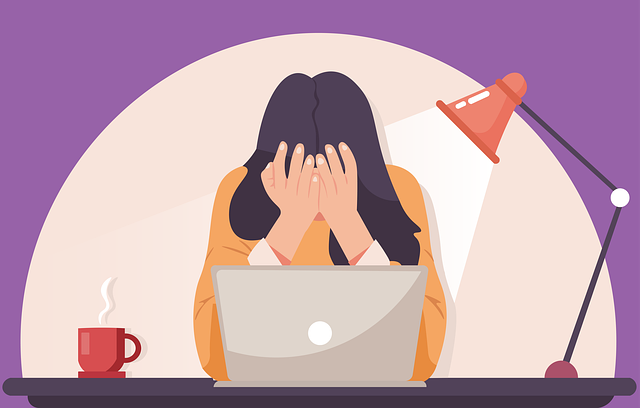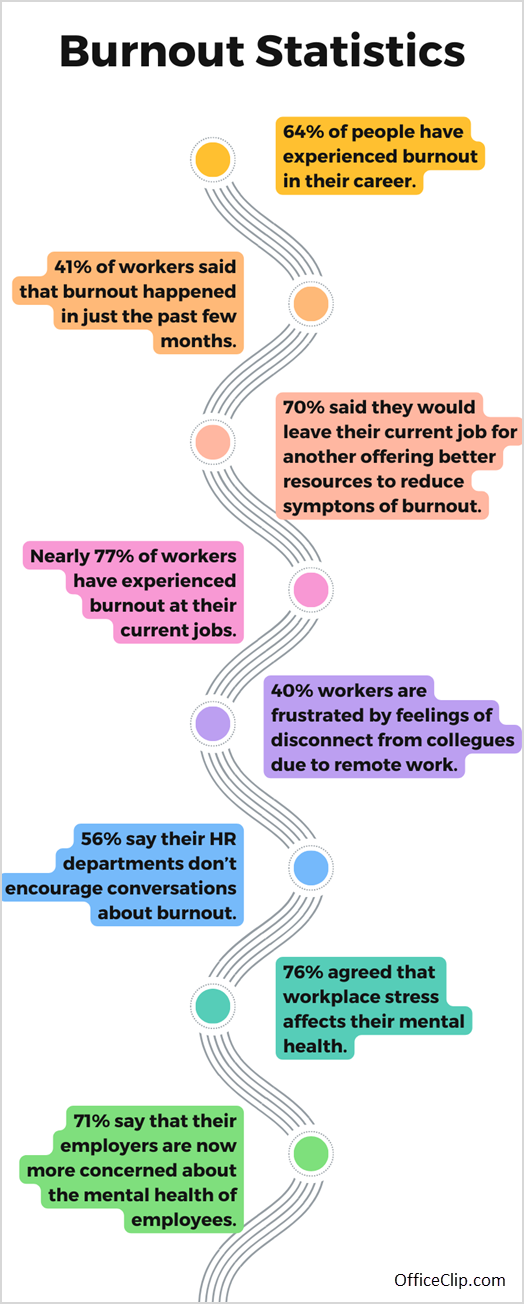This blog article is a summary of a detailed article on: How to minimize Employee burnout?
Employee burnout is a serious issue that can negatively affect employees and businesses. The article discusses the causes and symptoms of burnout and how to prevent and address it.

What is Burnout?
Burnout is a state of exhaustion, affecting your physical and mental energy, making even routine tasks challenging. It can also lead to persistent stress and fatigue, impacting overall well-being.
Are you struggling with daily tasks due to stress and exhaustion? Take this quiz to see if you’re experiencing the symptoms!
Free Template to measure Burnout
Burnout Statistics:

Key causes of burnout:
- Stressful work environments: This can include factors such as long hours, heavy workloads, and lack of support from management.
- Lack of work-life balance: Employees who lack time for their personal lives are more likely to experience burnout.
- Poor communication and leadership: If employees don’t feel like they are being heard or supported by their managers, they are more likely to feel burned out.
- Inability to disconnect: Constant interruptions during remote work through text, emails and phone calls creates constant pressure to complete the work.
Symptoms of burnout:
- Lack of motivation at work
- Disengagement
- Not able to coordinate with team members
- Procrastination
- Withdrawal or isolation
- Frequent illness
- Reduced performance
- Getting a sense of failure or self-doubt
Negative impacts of burnout:
- Decreased productivity: Stressed and exhausted employees are less likely to be productive at work.
- Increased absenteeism: Burned-out employees are more likely to miss work.
- Health problems: It can lead to many health problems, including physical and mental health issues like depression, anxiety, fatigue, obesity, diabetes, insomnia, etc.
What businesses can do to prevent and address burnout?
- Create a supportive work environment: This includes providing employees with resources and support and ensuring they feel valued.
- Promote work-life balance: Encourage employees to take breaks and disconnect from work outside of work hours.
- Communicate effectively: Ensure employees understand their roles and responsibilities clearly and feel they have a voice in the organization.
- Offer mental health resources: Provide employees access to mental health resources, such as counseling or employee assistance programs.
Simple strategies for employees to avoid burnout:
- Work-life balance: Set boundaries between work and personal time. Also, proper planning and time management will create a work-life balance.
- Learn to say “no”: Don’t overload yourself. Prioritize your tasks and politely decline additional responsibility if they affect your well-being.
- Take breaks: Taking short breaks throughout the day will help to refresh and focus better.
- Get enough sleep: Sleep for atleast 6 hours and relax in between work hours.
- Exercise regularly: Exercise and meditation helps to fight mental exhaustion and increase productivity.
- Discuss: Share and discuss your problems with family or friends to reduce stress and find solutions. If required seek professional help.
Businesses can create a happier and more productive workforce by taking steps to prevent and address burnout.
